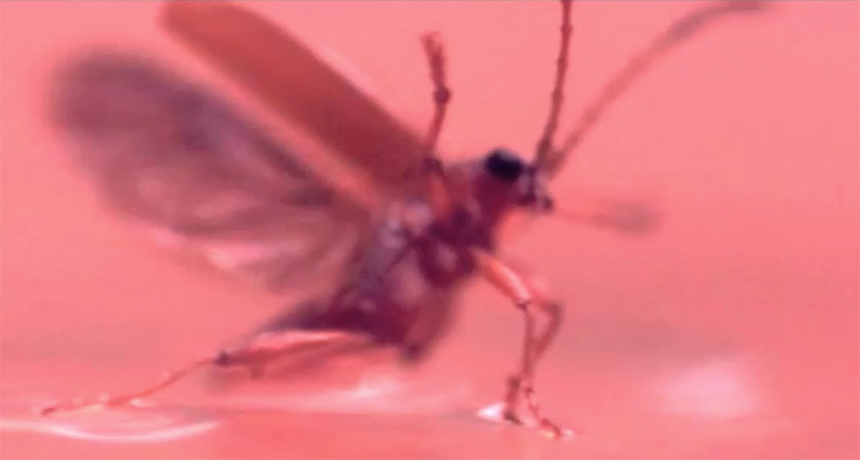These beetles use surface tension to water-ski

Waterlily beetles (Galerucella nymphaeae) water-ski at up to 0.5 meters per second. That’s equivalent to a human moving at 500 kilometers per hour.
Manu Prakash and Haripriya Mukundarajan

Waterlily beetles (Galerucella nymphaeae) water-ski at up to 0.5 meters per second. That’s equivalent to a human moving at 500 kilometers per hour.
Manu Prakash and Haripriya Mukundarajan